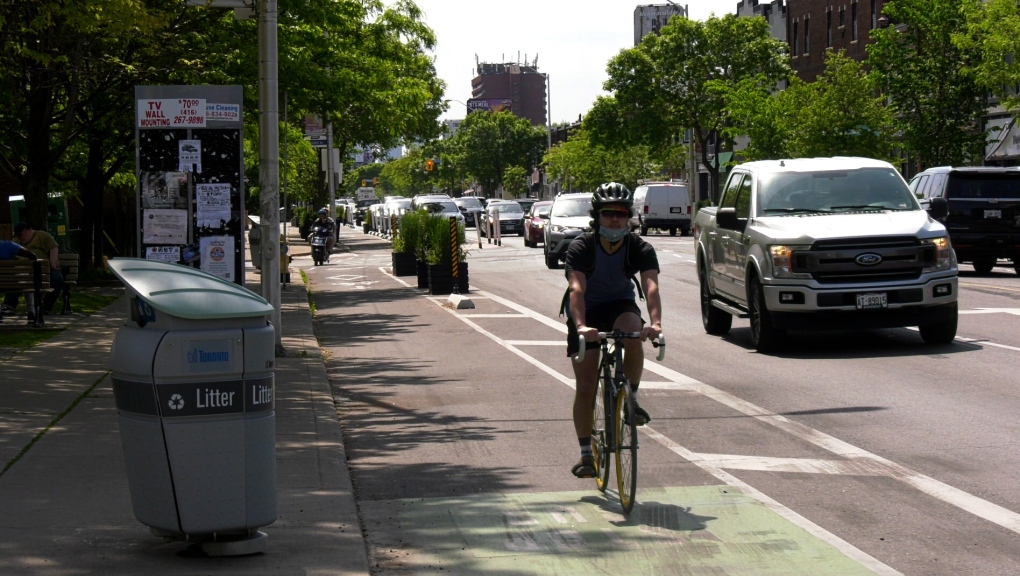daftandbarmy
Army.ca Dinosaur
- Reaction score
- 31,883
- Points
- 1,160
It looks nice hanging off the back of my pickup truck 
While Canadians are in general favourable towards bicycles as a method of transportation, only 4% prefer to use a bicycle for small distances of 2Km/1 mile, putting Canada at the bottom of the list of 28 countries in bicycle usage for small distances. Further, only 16% of Canadians ride a bicycle at least once a week, again, the lowest in 28 countries. While the long winters are likely a prohibitive factor for normalizing year-long biking preferences, Canadians also highlight safety concerns: Two-thirds feel cyclists in their area disrespect traffic rules & regulations (65%), cyclists represent as much danger to pedestrians as automobiles (63%) and are in general, a danger to drivers (60%). Half (48%) feel cycling from one place to another in their area is too dangerous.
These are some of the findings of a survey of 20,057 adults under the age of 75 conducted between March 25 and April 8, 2022 on Ipsos’s Global Advisor online survey platform.
Interestingly, Canadian women (83%) are significantly more likely than men (75%) to say that cycling plays an important role in the reduction of carbon emissions.
Similarly, in comparison to the global country average of 80%, much fewer Canadians (63%) believe that cycling has an important part to play in the reduction of traffic. Canada and the United States are the two countries least likely to agree (63% and 62%, respectively).
The global landscape of favourability towards various modes of transportation differs from that of Canadians – globally, cycling enjoys a higher level of favorability (82%) than do all other forms of transportation and automobiles, as well as e-bikes, are neck-in-neck at second and third spots (74% and 73%, respectively).
‘Bike culture’ enjoys limited receptivity among Canadians
May 24, 2022 — A new Ipsos survey ahead of the World Bicycle Day to be celebrated on 3rd June 2022, finds that most adults across 28 countries consider cycling plays an important role in the reduction of carbon emissions (on average, 86% do so) and in the reduction of traffic (80%). While there is a global consensus on bicycles’ key role to reduce carbon emissions and traffic and there is widespread support for assigning a higher priority to bicycles in new infrastructure projects, agreement on these aspects is one of the lowest in Canada.While Canadians are in general favourable towards bicycles as a method of transportation, only 4% prefer to use a bicycle for small distances of 2Km/1 mile, putting Canada at the bottom of the list of 28 countries in bicycle usage for small distances. Further, only 16% of Canadians ride a bicycle at least once a week, again, the lowest in 28 countries. While the long winters are likely a prohibitive factor for normalizing year-long biking preferences, Canadians also highlight safety concerns: Two-thirds feel cyclists in their area disrespect traffic rules & regulations (65%), cyclists represent as much danger to pedestrians as automobiles (63%) and are in general, a danger to drivers (60%). Half (48%) feel cycling from one place to another in their area is too dangerous.
These are some of the findings of a survey of 20,057 adults under the age of 75 conducted between March 25 and April 8, 2022 on Ipsos’s Global Advisor online survey platform.
Reducing Canada’s carbon footprint with cycling
There is a global consensus that cycling plays an important role in the reduction of carbon emissions as well as contributes to a reduction of traffic. Looking at the opinion of Canadians specifically, although a large majority (79%) of Canadians believe that cycling has a big impact on reducing one’s carbon footprint, Canada is one of the least likely countries to believe so. Canadian opinion not only trails behind the peak consensus in countries such as China and Peru (94% each), but it is also behind the global country average of 86%. Residents of Great Britain, Norway and the United States share Canadians’ opinions at 78% each, while Germany sits last at 77%.Interestingly, Canadian women (83%) are significantly more likely than men (75%) to say that cycling plays an important role in the reduction of carbon emissions.
Similarly, in comparison to the global country average of 80%, much fewer Canadians (63%) believe that cycling has an important part to play in the reduction of traffic. Canada and the United States are the two countries least likely to agree (63% and 62%, respectively).
Cycling as a solution in Canada
When talking about the general opinion of various methods of transportation used in their community, 78% of Canadians are generally favourable towards bicycles. Although high, favourability toward bicycle in Canada trails behind automobiles (84%) which enjoys the first position on the list and is followed by electric bicycles (e-bikes) at 73%, motorbikes at 65%, lorries/trucks at 54% and standup scooters at 50%.The global landscape of favourability towards various modes of transportation differs from that of Canadians – globally, cycling enjoys a higher level of favorability (82%) than do all other forms of transportation and automobiles, as well as e-bikes, are neck-in-neck at second and third spots (74% and 73%, respectively).





